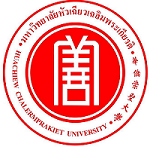Please use this identifier to cite or link to this item:
https://has.hcu.ac.th/jspui/handle/123456789/3901| Title: | Trunk stabilizer muscle activity during manual lifting with and without back belt use in experienced workers |
| Authors: | Nopporn Kurustien Keerin Mekhora Wattana Jalayondeja Suebsak Nanthavanij นพพร คุรุเสถียร คีรินท์ เมฆโหรา วรรธนะ ชลายนเดชะ สืบศักดิ์ นันทวานิช Huachiew Chalermprakiet University. Faculty of Physical Therapy Mahidol University. Faculty of Physical Therapy Mahidol University. Faculty of Physical Therapy Thammasat University. Sirindhorn International Institute of Technology |
| Keywords: | กำลังกล้ามเนื้อ Muscle strength เข็มขัดพยุงหลัง Back belt การฝึกกำลังกล้ามเนื้อ Muscle strength training การยกและเคลื่อนย้าย Lifting and carrying การบันทึกคลื่นไฟฟ้ากล้ามเนื้อ Electromyography เออร์โกโนมิกส์ Ergonomics แกนกลางลำตัว Core muscles |
| Issue Date: | 2014 |
| Citation: | Journal of the Medical Association of Thailand 97, Suppl.7 (June 2014) S75-S79 |
| Abstract: | Objective: The present study evaluated the changes in trunk-stabilizer electromyography (EMG) activities during manual lifting with and without a back belt in experienced back belt users. Material and method: Eighteen participants from a warehouse and distribution center in Thailand, aged 22 to 44 years, were assessed for trunk stabilizer muscle EMG activity including the rectus abdominis (RA), external abdominal oblique (EO), transversus abdominis (TrA), internal abdominal oblique (IO), erector spinae (ES), and multifidus (MF). The EMG data were recorded during (1) rest and (2) the initial phase of manual lifting in a dynamic semi-squat posture. For both conditions, the data were compared with and without wearing a back belt. Results: The results showed that wearing a back belt significantly decreased TrA/IO activity during rest (p<0.01) and significantly increased RA activity during the lifting period (p<0.05) as compared with the condition of no back belt. Conclusion: The present study does not recommend healthy workers wear a back belt as a protective device for lower back injury, particularly without any lifting activity. However the back belt can be applied during lifting as it can enhance RA activity, which may help improve abdominal pressure and is less likely cause weakness of the TrA. |
| Description: | สามารถเข้าถึงบทความฉบับเต็ม (Full Text) ได้ที่ : https://pubmed.ncbi.nlm.nih.gov/25141532/ |
| URI: | https://has.hcu.ac.th/jspui/handle/123456789/3901 |
| Appears in Collections: | Physical Therapy - Articles Journals |
Files in This Item:
| File | Description | Size | Format | |
|---|---|---|---|---|
| Trunk-stabilizer-muscle-activity-during-manual-lifting.pdf | 61.25 kB | Adobe PDF | View/Open |
Items in DSpace are protected by copyright, with all rights reserved, unless otherwise indicated.
